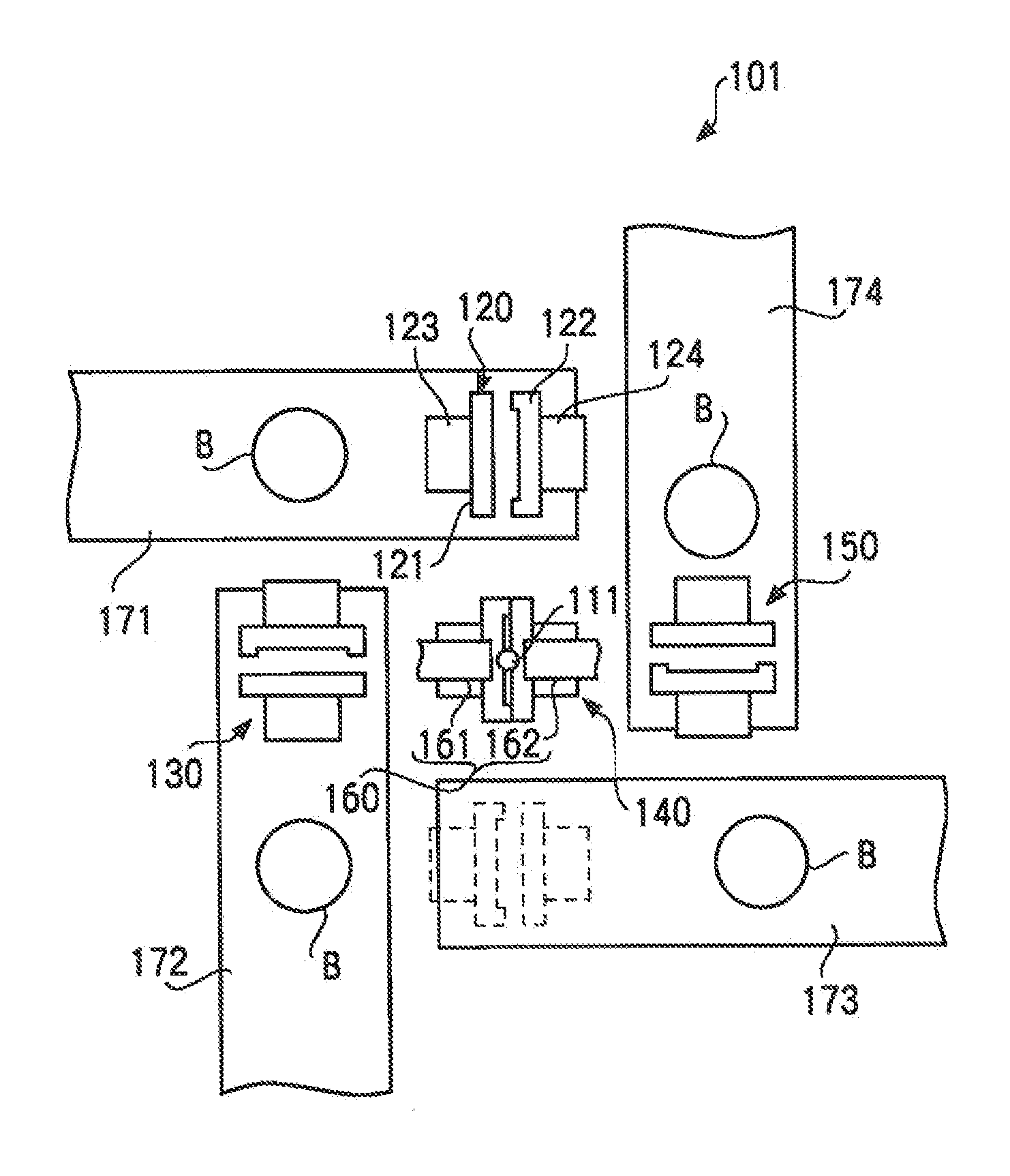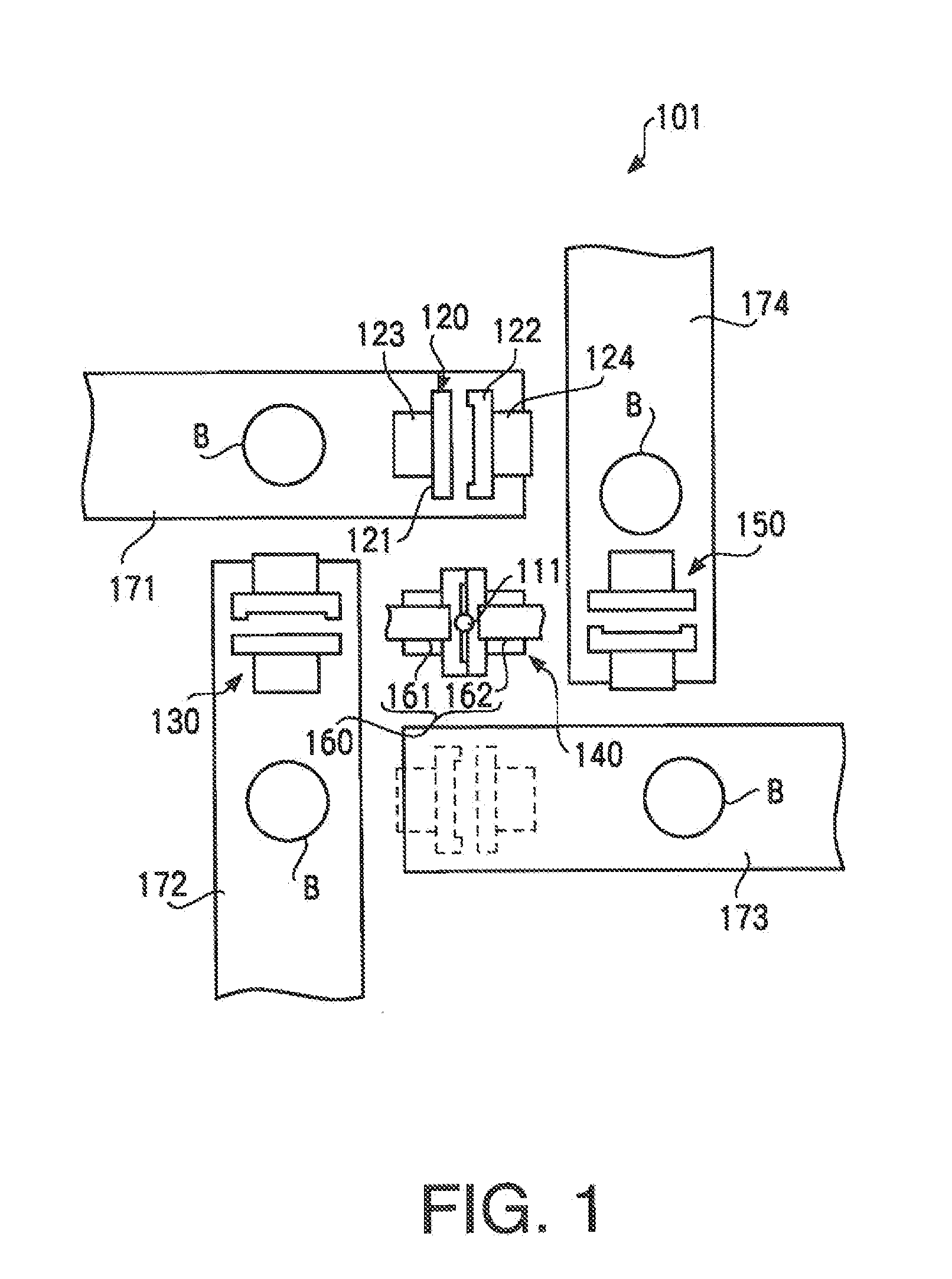Method of producing glass blank for substrate of information recording medium, substrate for information recording medium, and information recording medium; and manufacturing apparatus for glass blank for substrate of information recording medium
a technology of information recording medium and glass blank, which is applied in the direction of glass tempering apparatus, blowing machines, instruments, etc., can solve the problems of large temperature difference, temperature gradient, deformation of the lower mold, etc., and achieves high surface flatness, easy contact with the falling gob, and improved flatness of glass blank
- Summary
- Abstract
- Description
- Claims
- Application Information
AI Technical Summary
Benefits of technology
Problems solved by technology
Method used
Image
Examples
examples
[0207]Hereinafter, the glass blank manufactured with the glass blank manufacturing apparatus of the embodiment of the present invention explained above (a first example) and the glass blank manufactured with a glass blank manufacturing apparatus with a conventional configuration (a first comparative example) are explained.
first example
[0208]The glass blank B, which is used as the glass substrate for the magnetic disk and which has a diameter of 77 mm and a thickness of 0.9 mm, is produced, using the glass blank manufacturing apparatus 101 (FIG. 1, FIGS. 2A-2C) of the first embodiment of the present invention, in the following procedures.
[0209]First, the glass materials are prepared so as to obtain the composition of the first embodiment in Table 1, and are poured into a glass melting furnace. Then, the glass materials are melted, clarified, and homogenized. The obtained molten glass is discharged from the molten glass outlet 111. A temperature of the molten glass material LG discharged from the molten glass outlet 111 is 1300 degrees in Celsius, and at this time, the viscosity of the molten glass material is 700 poise. Additionally, temperatures of the first and second molds of the press units 120, 130, 140, and 150 are controlled to be around 420 degrees in Celsius.
[0210]The molten glass material LG discharged f...
PUM
| Property | Measurement | Unit |
|---|---|---|
| surface roughness | aaaaa | aaaaa |
| viscosity | aaaaa | aaaaa |
| height | aaaaa | aaaaa |
Abstract
Description
Claims
Application Information
 Login to View More
Login to View More - R&D
- Intellectual Property
- Life Sciences
- Materials
- Tech Scout
- Unparalleled Data Quality
- Higher Quality Content
- 60% Fewer Hallucinations
Browse by: Latest US Patents, China's latest patents, Technical Efficacy Thesaurus, Application Domain, Technology Topic, Popular Technical Reports.
© 2025 PatSnap. All rights reserved.Legal|Privacy policy|Modern Slavery Act Transparency Statement|Sitemap|About US| Contact US: help@patsnap.com



